No-knead bread started showing up on several of my
favorite food blogs quite a while ago. I've also been meaning to read
this book (unfortunately, I'm a complete cheapskate, so the book has not been purchased).
I really loved the five-minutes-a-day idea because sometimes I can be kind of lazy when it comes to cooking (this is a problem because my husband thinks that tater-tot casserole, chili mac, and meatloaf count as "meals" (Hey Mom Alston! Sorry you haven't won me over to the meatloaf loving way of life! I still hate it but appreciate your conversion efforts!). The basic premise of this philosophy is that you make a big batch of dough and use it daily/almost daily over the course of two weeks. I settled on trying
this recipe, which was recommended as a good starting place. (You can also just have at it with a
simple ratio, but I
was lazy wasn't confident enough.)

You begin by throwing all of the ingredients together. (I use my KitchenAid because I heart it.) I doubled the recipe because I wanted enough for eight loaves instead of four.

The dough will seem pretty runny, but that's okay.
When you realize that you got confused and tripled the amount of salt, baking soda, and yeast, you need to go back and add more water and flour, thus making enough dough for twelve loaves.
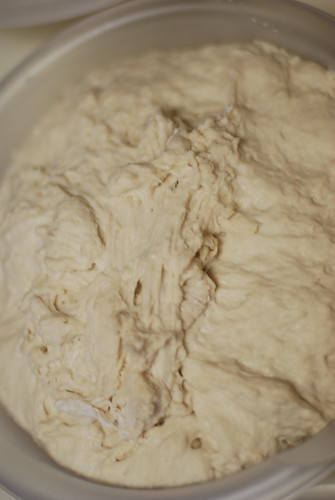
The dough needs to sit on the counter for a couple of hours. If you want to be able to use your Kitchen Aid during the resting time, you should probably transfer the dough to another container. If you had a momentary brain lapse and tripled the recipe because you were too lazy to use ratios, you will probably need to let the dough rest in two bowls...

But, you should make sure that they are both big bowls. Otherwise you will have an overflowing mess after two hours.
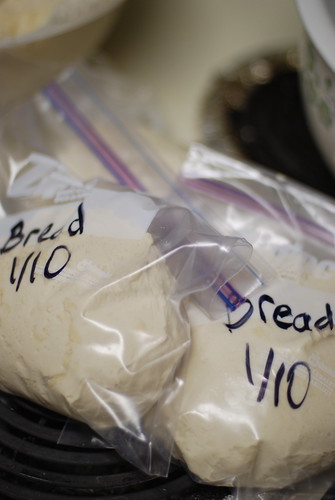
Feel free to use quick thinking and put some of the overflowed dough in a series of ziploc bags to freeze for use later.

The rest of the dough can go in the fridge until your ready to use it. Make sure the container isn't airtight.
Note to readers: Accidentally tripling a recipe and trying to force dough into containers that are too small can result in continued expansion in the fridge. Be ready for it.
When you're ready to bake your bread, just pull off a chunk of the dough.
The recipe calls for a baking stone. I do own a baking stone, but it's in storage in Seattle, along with all of my other real dishes, kitchen equipment, etc. My wise colleague Denise (who functions as my pseudo-maternal advisor in Shishmaref- "Um, Denise, if I bring this oil over, will you smell it and tell me if it's gone rancid? And then not judge me if it is?") suggested that I use a nice baking dish that would hold the heat evenly.

I do own a nice baking dish. I bought it in Paraguay. Steve made fun of me for carrying it all the way back into the U.S. and up to Alaska.
Note to readers: A small baking dish is nothing (in size or inconvenience) compared to the
berimbau he brought back.

For those of you kitchen snobs, it is a Le Creuset baking dish. It is the only Le Creuset piece I own at this time. Steve has been warned that someday I intend to own
a lot more.
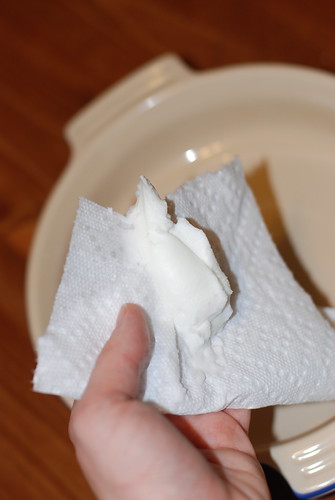
I greased the dish with shortening.
Note to readers: this shot is completely staged. It turns out that I'm too uncoordinated to operate my camera or grease a pan with my left hand. I had to settle for holding-the-paper-towel-with-shortening-on-it with my left hand and operating my camera with the right.

Shape the dough into a ball and tuck all the edges underneath so that the top is smoothish. (This ball of dough will magically grow in the next few shots. Do not be alarmed. It is just a different batch of bread. VFN's Creative Cooking shows are not always shot in real time...)
Apparently, you can also shape the dough into
sandwich loaves, but that technique hasn't been
botched tried in VFN's test kitchens.
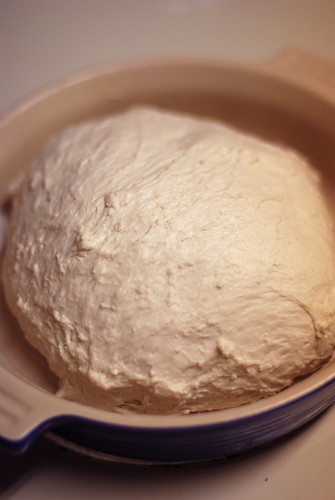
Let the dough sit for forty minutes. Preheat the oven at 450 sometime during this resting period.
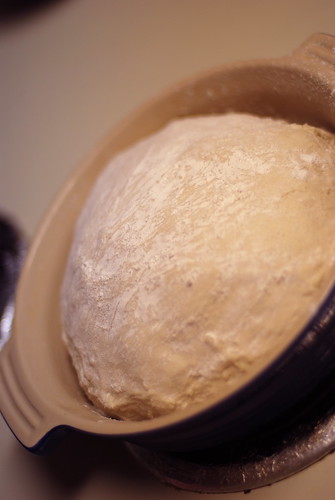
Sprinkle the loaf, or boule, with flour...
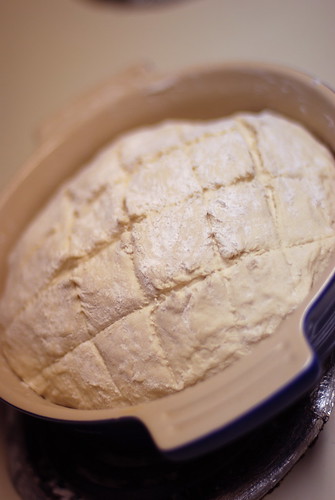
and slice any design that makes your heart happy.
If you're really brave, you can bake the bread over a dish of water. Maybe you can
avoid using a glass dish.
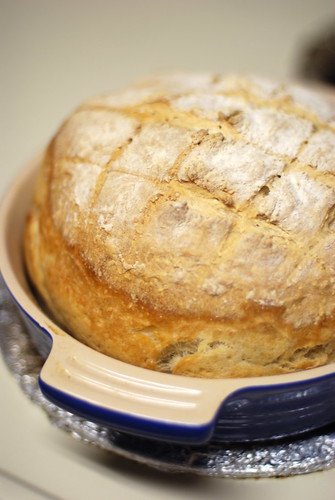
The final product has been greatly enjoyed in the Alaska Alston household.















































